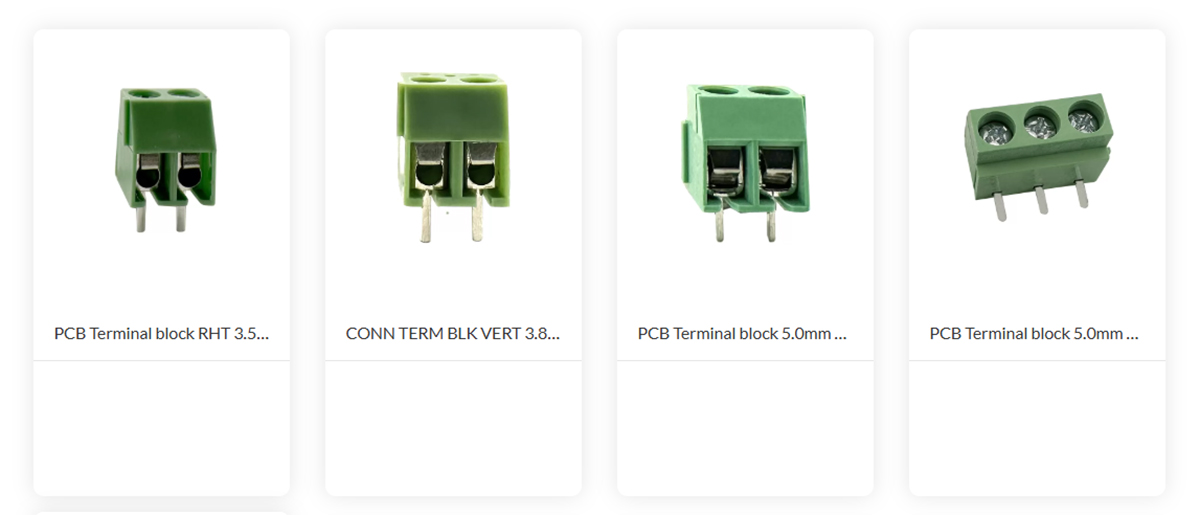
Reliable Wire Protection & Secure Connections: The Role of PCB Terminal Block Wire Protectors in Modern Electronics
In today’s fast-evolving electronics and automation industry, PCB Terminal Block Wire Protectors have become a crucial component for ensuring safe, reliable, and long-lasting wire connections on printed circuit boards. As a trusted terminal block supplier, this category delivers essential solutions for stable wire insertion, enhanced protection, and simplified maintenance. With increasing demand for compact designs and secure wiring, PCB terminal block wire protectors play a key role in power and signal applications, providing durability and efficiency across diverse environments.

What Are PCB Terminal Block Wire Protectors?
PCB Terminal Block Wire Protectors are specialized terminal blocks equipped with metal spring or protective plates that safeguard wire strands during insertion. The protector prevents wire damage caused by screw pressure, ensuring a firm, stable, and repeatable connection. These components are particularly effective for multi-strand wires, reducing the risk of broken strands, poor contact, or long-term failure.
They are ideal for applications requiring frequent wiring changes, vibration resistance, and enhanced wire integrity, making them a preferred choice in modern electronic and electrical systems.

Application Scenarios for PCB Terminal Block Wire Protectors
PCB Terminal Block Wire Protectors are widely used in fields requiring high wiring reliability and long-term durability:
Industrial Automation
Provide stable wire protection in control boards, PLC modules, I/O boards, and sensor interfaces.
Power & Energy Systems
Ensure secure connections in power supplies, voltage regulators, battery management systems, and smart meters.
Communication & Networking Equipment
Improve transmission reliability in telecom boards, routers, base stations, and network modules.
Consumer Electronics & Home Appliances
Support safe wiring in compact devices, lighting systems, and smart home control units.
Instrumentation & Measurement Systems
Deliver accurate signal integrity for meters, analyzers, detectors, and monitoring devices.
Advantages of PCB Terminal Block Wire Protectors
Understanding the key benefits helps engineers select the optimal wiring solution:
Enhanced Wire Protection
Protective plates prevent wire damage, maintain conductor integrity, and improve long-term contact stability.
Reliable & Firm Connection
Screw + protector design ensures even pressure, enabling vibration-resistant and reliable performance.
Easy Maintenance
Wires can be re-inserted or replaced multiple times without damaging the conductor, reducing maintenance effort.
Wide Compatibility
Supports solid or stranded wires, multiple wire sizes, and various pitch options (e.g., 3.50mm / 3.81mm / 5.08mm).
Durable Construction
High-quality insulation materials and corrosion-resistant metals ensure dependable performance even in harsh conditions.
Next Steps
For the best performance, consult technical datasheets and installation guidance from trusted manufacturers like RHT. These resources provide detailed specifications, wiring instructions, and recommended standards—helping engineers build safer and more efficient electrical systems.
Frequently Asked Questions (FAQs)
Q1: What makes PCB Terminal Block Wire Protectors different from standard PCB terminal blocks?
Wire protectors use a metal plate or spring to shield the wire from direct screw pressure, preventing conductor damage and ensuring long-term stability.
Q2: How do I choose the right PCB Terminal Block Wire Protector?
Consider the wire size, current rating, pitch (e.g., 3.50mm / 3.81mm), mounting orientation (vertical or right-angle), and application environment.
Q3: Where can I find reliable PCB Terminal Block Wire Protectors?
Suppliers like RHT provide a wide range of wire protector terminal blocks with robust materials, precise construction, and comprehensive technical support.
Investing in high-quality PCB Terminal Block Wire Protectors ensures safer, more reliable, and longer-lasting electrical connections—empowering modern electronics with stability, performance, and confidence.